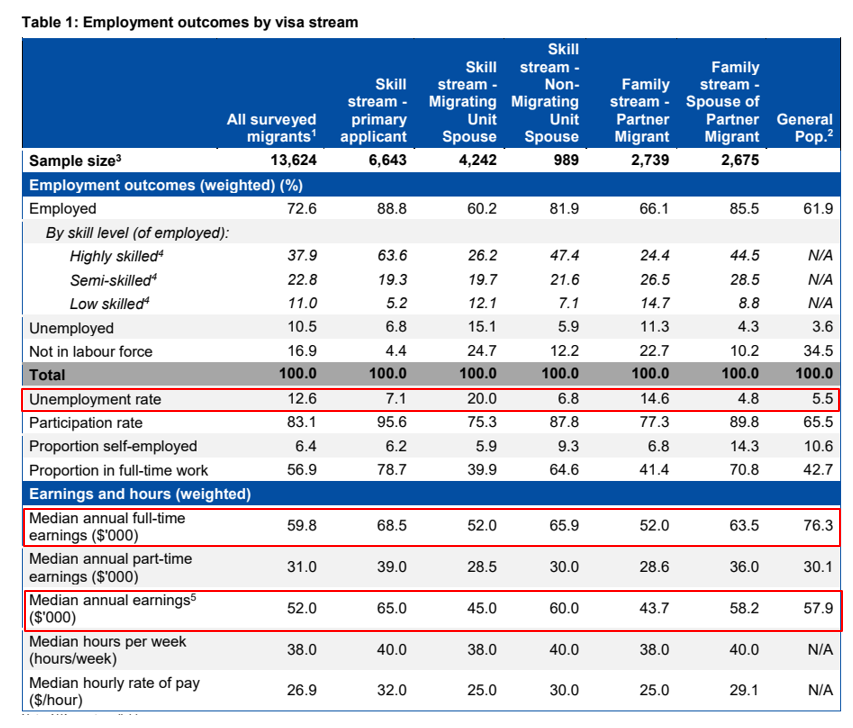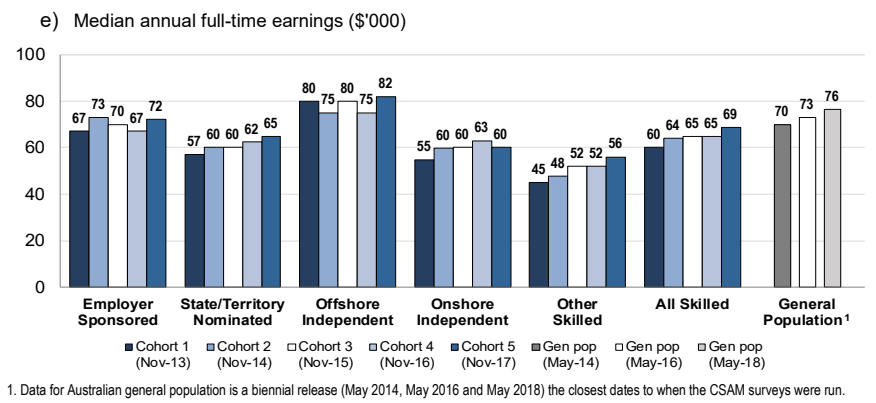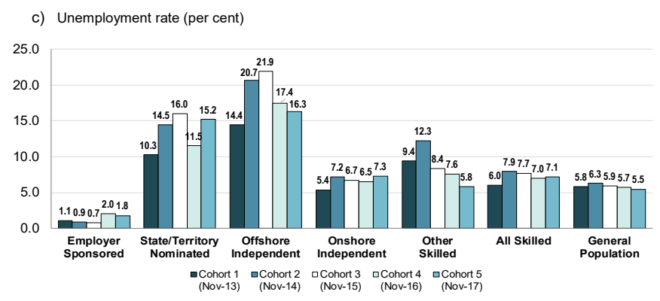Late last year, Abul Rizvi – former Deputy Secretary of the Department of Immigration and one of the architects of Australia’s faux ‘skilled’ migration program – penned an article claiming that the $53,900 Temporary Skilled Migration Income Threshold (TSMIT) wage floor for regional skilled migrants was too high:
For people living in Melbourne or Sydney, $53,900 per annum that may seem not a particularly high salary.
But getting a job that pays that much in many of our regional areas is extraordinarily difficult…
At the 2016 census, median employee income for major regional centres was substantially below $53,900 per annum, in towns like Albury, Dubbo, Geelong and Rockhampton.
While in time most skilled migrants achieve much higher salaries, to expect them to do so soon after graduation risks them being exploited and/or being put into immigration limbo.
It appears that Rizvi has had a Damascus moment, because now he has attacked the Morrison Government for freezing the TSMIT at only $53,900, which has fueled migrant exploitation and undercut local workers [my emphasis]:
A highly skilled permanent migration program could not be delivered without a well-designed skilled temporary entry category.
Just as it is the case with the equivalent visa to the USA (H-1B), skilled temporary entry has been at the fulcrum of Australia’s migration arrangements for over 20 years.
The high technology sector, as well as the health sector in the U.S., have fought Donald Trump tooth and nail to prevent him from killing the equivalent visa category in the USA…
A well designed skilled temporary entry category creates many additional jobs, boosts productivity, funds training of Australians and makes a highly positive contribution to the budget.
For years, however, the Government has resisted setting a much higher minimum salary for skilled temporary entry while the unions have insisted on “labour market testing”.
The former is crucial to both protecting job opportunities of Australians and limiting the risks of exploitation of temporary entrants. But the latter, while having a laudable objective, is in practice little more than a bureaucratic charade…
Will Morrison and Coleman have the courage to fix the many design problems with Australia’s current skilled temporary visa category?…
First, it is hilarious seeing Rizvi pointing to the USA (H-1B) skilled temporary visas as also being “at the fulcrum” of US immigration system. Has he not seen the Economic Policy Institute’s latest study showing how the H1B visa system has been systemically rorted by US employers to undercut American workers (see here)?
Obviously, the very same thing is happening in Australia, given the $53,900 TSMIT has been set well below the median Australian wage of $1,100 per week ($57,200 p.a.), according to the ABS:

As you can see, the TSMIT wage floor has fallen $3,300 (6%) below the median income of all Australians ($57,200), which includes unskilled workers. Thus, the TSMIT has incentivised employers to hire cheap migrants instead of local workers, as well as abrogated the need to provide training.
Second, when will Rizvi acknowledge that Australia’s purported ‘skilled’ visa system is actually a low-skilled, low-wage visa system?
The evidence is standing in plain sight in the Department of Home Affair’s Continuous Survey of Migrants:

As shown above, migrants have significantly worse labour market outcomes than the general population. Specifically:
- The median annual full-time earnings of migrants was $16,500 (22%) below the general population in 2017;
- The median annual earnings of migrants was $5,900 (10.2%) below the general population in 2017; and
- The unemployment rate of surveyed migrants (12.6%) was more than double the general population (5.5%) in 2017.
Even if we focus on the skilled stream only, both median earnings and unemployment is far worse than the general population:


These are shocking results. The skilled stream accounts for 60% of Australia’s permanent migration program. They are purported to be highly qualified and brought into Australia to overcome so-called ‘skills shortages’.
These ‘skilled’ migrants should, therefore, be paid well above the general population, which comprises both skilled and unskilled workers, as well as have very low unemployment.
Therefore, the fact that ‘skilled’ migrants are paid less, and suffer higher unemployment, is a damning indictment of Australia’s purported ‘skilled’ immigration system, and is bonafide proof that it is undercutting local workers.
To restore integrity to Australia’s visa system, all skilled migrants (both temporary and permanent) should be required to be employer-sponsored (given their far better employment outcomes – see above charts) and paid at least at the 75th percentile of earnings (preferably higher).
This would ensure that the skilled visa scheme is used sparingly by businesses to employ only highly skilled migrants with specialised skills, not abused by businesses as a tool for undercutting local workers and eliminating the need for training.

